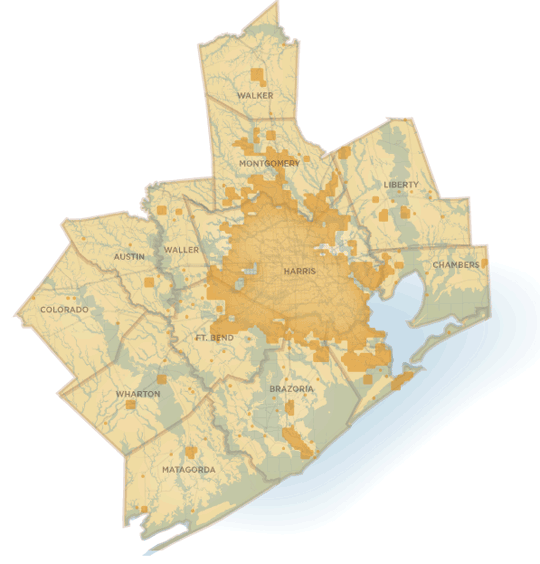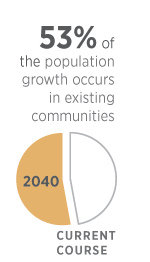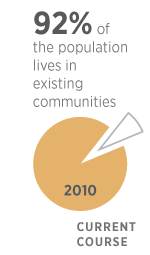Current Course
The Current Course alternative is meant to represent a future in which the status quo development trends are maintained.
Representing the status quo
In this alternative, most of the growth occurs outside existing towns and cities. This helps keep housing prices down, but does not create long-term value for most homeowners, as older cities, suburbs and towns decline with the continuous movement of people to newer communities.
The distance between jobs, housing and activities also continues to increase, meaning that driving remains the option for almost all the trips people make. Despite major upgrades in roads and freeways, traffic congestion keeps increasing, as the number of new drivers grows faster than the funds available for road expansion and maintenance. Public transportation, walking and bicycling increase somewhat, but don't make a dent in the congestion problem.
Large amounts of green space and natural areas are converted to suburban-style development. Better designs and technologies help offset some of the environmental impacts, but these and other efforts to improve air and water quality are insufficient to keep up with the rate of population growth.
There is a substantial decline in the region's overall education level as population growth exceeds capabilities of the existing education system. The region's minority communities, now the majority of our population, are disproportionately affected.
This makes the workforce less competitive for many high-demand jobs, and economic competitiveness suffers.
Click here to see the survey results.





